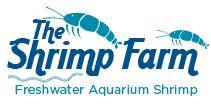Pinocchio shrimp (Caridina gracilirostris) | Care & info
They may not be the most common shrimp in the hobby, but the appropriately named Pinocchio shrimp (Caridina gracilirostris) will definitely be a fascinating addition to your aquarium. If provided the right care, that is: there are quite a few myths out there about their care that you are best off avoiding.
Keep reading for everything you need to know about Pinocchio shrimp care and keeping this red-nosed shrimp in your own aquarium!
| Scientific name | Caridina gracilirostris |
| Common names | Pinocchio shrimp, pinokio shrimp, red nose shrimp, Rudolph shrimp, rhino shrimp |
| Difficulty level | Easy to intermediate |
| Origin | Indo-Pacific region |
Table of Contents
Pinocchio shrimp requirements
Sources can be quite unclear on Pinocchio shrimp requirements. Some list them as fully freshwater, while others mention the possibility of brackish. In some cases a 5 gallon minimum tank is recommended, while other sites say you need 20+ gal to keep them happy.
So which guidelines are true and which aren't? First off, and most importantly, these shrimp are not a freshwater species. They require brackish water and will perish sooner or later if you keep them in your freshwater tank. Practical Fishkeeping mentions 10 grams of salt per liter, which is around 38 grams per gallon and comes down to a specific gravity of 1.007-1.008. That being said, these shrimp naturally inhabit estuaries and can probably take a relatively wide range of salinities as long as the specific gravity isn't too low or high.
We couldn't find a definitive answer on tank size, but it's probably a good idea to go for a setup of 10 gallons or larger just in case. Add plenty of hiding places in the form of shrimp flats, decorations and live plants that can withstand brackish water, like Java fern (Microsorum pteropus).

Water quality
As discussed above, Pinocchio shrimp need brackish water. Like all other shrimp, they also require their aquarium to be filtered and cycled, as any traces of ammonia or nitrite can quickly become deadly. Nitrate is less harmful but still a problem in large amounts. Do regular water changes to keep it below a reading of 10. Always keep a close eye on your water values using a liquid test kit.
Important to remember: when doing top-offs in a brackish aquarium (refilling what has been evaporated), don't use brackish water. Instead, slowly add fresh water, or you'll gradually increase the salinity of your tank, as salt doesn't evaporate.
pH: Sources don't agree. Some mention 6.5-7.5 while others insist on more alkaline water. 7 and up should probably work well.
Temperature: 72-80 °F
Salinity: Brackish, specific gravity likely between 1.005-1.010.
Tankmates
Tankmate options are a bit limited for Pinocchio shrimp due to their need for brackish water and their small size. With a maximum size of around 1.5 inch, these shrimp aren't the largest, which means they can easily fall prey to hungry fish.
Brackish invertebrates are probably the best (and safest) choice. Try Nerite snails from the Clithon genus, Hawaiian volcano shrimp (Halocaridina rubra) and certain brackish-proof ghost shrimp varieties. The tiny bumblebee goby might work; although it's carnivorous in nature it's probably too small to eat adult shrimp.
Pinocchio shrimp diet
Like most aquarium shrimp, Pinocchio shrimp aren't picky eaters at all. They are omnivores that naturally eat anything they can find. In the aquarium, they'll enjoy picking at algae and biofilm, although you should supplement their diet with shrimp foods as well as extras like frozen foods or blanched veggies.
Breeding Pinocchio shrimp
Breeding Pinocchio shrimp isn't the easiest task. Like multiple other shrimp species, including the very popular Amano shrimp, they go through a larval stage. Although the larvae should theoretically be able to survive and moult successfully in brackish water, they are still very fragile and can be difficult to keep alive.
Your aquarium is likely not "dirty" enough to supply the larvae with the microscopic foods they need. To solve this problem, you can try raising them in "green water" (with lots of floating algae) or feed commercially available microfoods like Bebi.
Buying Pinocchio shrimp
Pinocchio shrimp definitely aren't the most common species in the hobby. Although European aquarium stores often seem to carry them, you might have trouble locating them if you're in the US.
As with many rarer shrimp species, the Internet is your solution: you should be able to find sellers online, or maybe a hobbyist willing to trade or sell a few of their own stock.



 Shrimp
Shrimp Fish
Fish Crab &
Crab & Plants
Plants Foods
Foods Snails
Snails
Please share the recipe but without Gallatin.